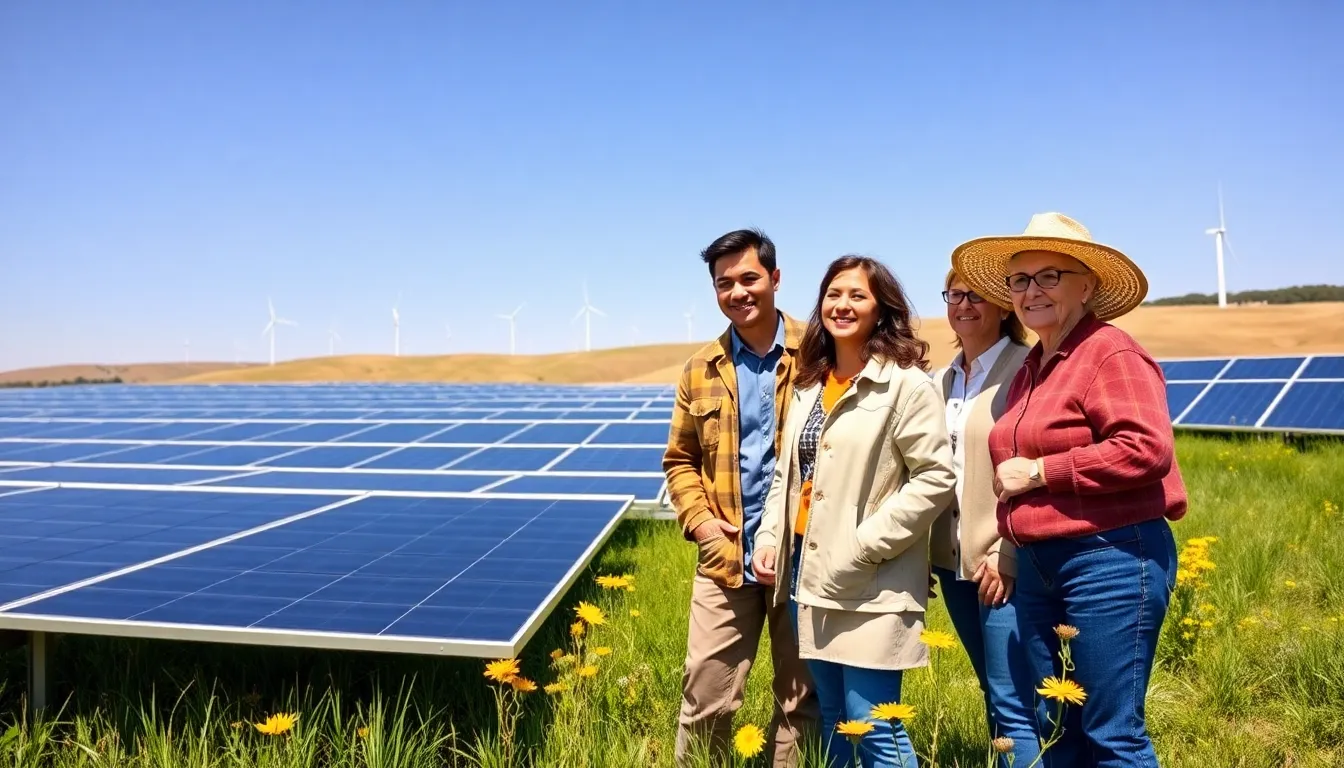In an age where energy demands are constantly evolving, finding reliable and sustainable solutions is paramount. LotsOfPower.net offers a comprehensive approach to understanding energy solutions that are not just efficient but also environmentally friendly. This article explores various aspects of energy, from renewable resources to innovative efficiency practices, and what the future holds for energy distribution. Join us on a journey to empower your energy needs with knowledge that fuels informed decisions.
Table of Contents
ToggleUnderstanding Energy Solutions

The first step in addressing energy needs is to understand the various options available. Energy solutions can be categorized into two primary sectors: renewable energy sources and energy storage technologies.
Renewable Energy Sources
Renewable energy sources are pivotal in the transition towards a sustainable energy future. These sources include solar, wind, hydroelectric, and geothermal energy. Each of these modalities harnesses natural processes to generate power without the exhaustive depletion of resources.
- Solar Energy: Utilizing photovoltaic cells, solar panels convert sunlight into electricity, executing a simple yet effective method for capturing energy.
- Wind Energy: Wind turbines capture kinetic energy from wind and convert it into electrical power, making it one of the fastest-growing energy sources globally.
- Hydroelectric Energy: By moving water through turbines, hydroelectric power generation utilizes gravitational potential energy, resulting in a consistent and reliable energy source.
- Geothermal Energy: This method harnesses heat from beneath the Earth’s surface to generate energy, proving both sustainable and efficient.
Energy Storage Technologies
While renewable sources are critical, efficiently storing that generated energy is equally important. Energy storage technologies, such as batteries and pumped storage hydroelectric systems, play a crucial role in energy management. Battery technologies, particularly lithium-ion batteries, provide quick discharge and recharge cycles, making them ideal for residential and commercial applications. Meanwhile, pumped hydro systems create a buffer for fluctuations in energy generation and demand, enabling a more stable energy supply.
Energy Efficiency Practices
With the increasing demand for energy, it is critical to carry out energy efficiency practices that can help reduce consumption and enhance sustainability.
Innovative Energy Management
Innovative energy management practices involve the strategic use of energy resources to maximize efficiency. From monitoring usage to optimizing energy distribution, smart management reduces waste and lowers costs for consumers and businesses alike.
- Energy Audits: Conducting energy audits can pinpoint areas where energy is wasted, helping organizations and individuals make targeted improvements.
- Demand Response Programs: These programs encourage consumers to reduce or shift their electricity usage during peak demand hours, effectively balancing the grid and reducing strain on energy sources.
Smart Home Energy Solutions
The rise of smart home technology has ushered in a new era of energy efficiency. Smart thermostats, energy-efficient appliances, and home automation systems work together to optimize energy usage.
- Smart Thermostats: These devices learn consumer habits to adjust heating and cooling settings automatically, ensuring comfort without unnecessary energy expenditure.
- Energy-Efficient Appliances: Modern appliances are designed to use less energy while delivering maximum performance. The ENERGY STAR rating system helps consumers identify products that meet superior energy efficiency guidelines.
The Future of Energy Distribution
As energy consumption patterns continue to evolve, the future of energy distribution is becoming increasingly diversified and innovative.
Emerging Technologies in Energy
Several technologies are emerging that can reshape how energy is distributed. Smart grids, for example, leverage digital technology to enhance electricity distribution and usage monitoring.
- Smart Grids: These automated systems are capable of adjusting to changes in energy demand, offering flexibility and reliability. They help better integration of renewable energy sources by providing real-time data for balanced consumption.
- Blockchain Technology: This technology can revolutionize energy trading by enabling decentralized energy transactions, allowing consumers to sell excess energy back to the grid seamlessly.
Global Trends in Energy Consumption
The global energy landscape is rapidly changing with increasing awareness of sustainability. Trends indicate a gradual shift towards cleaner energy solutions. Countries around the world are investing heavily in renewables, aiming to meet the ambitious goals set by international climate agreements.
Conclusion
As society progresses, the demand for energy is growing alongside an urgent necessity for sustainable practices. LotsOfPower.net empowers consumers by providing knowledge on energy solutions, efficiency practices, and advancements in energy distribution. Embracing these elements not only supports individual and communal energy needs but also paves the way for a greener future. The transition to innovative energy solutions is not just a goal: it’s an essential journey toward securing a sustainable world for generations to come.


